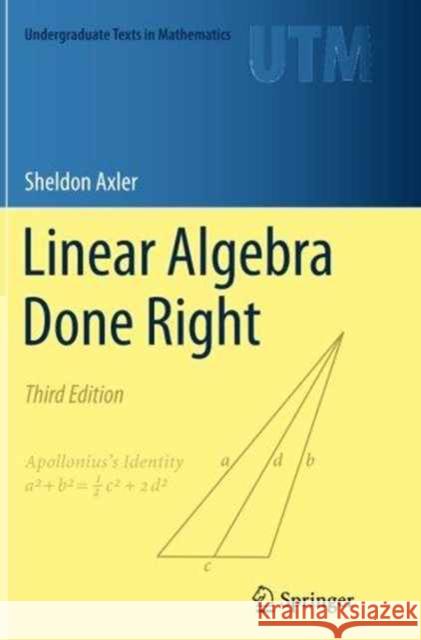Linear Algebra Done Right » książka
topmenu
Linear Algebra Done Right
ISBN-13: 9783319307657 / Angielski / Miękka / 2016 / 340 str.
Linear Algebra Done Right
ISBN-13: 9783319307657 / Angielski / Miękka / 2016 / 340 str.
cena 168,64 zł
(netto: 160,61 VAT: 5%)
Najniższa cena z 30 dni: 169,05 zł
(netto: 160,61 VAT: 5%)
Najniższa cena z 30 dni: 169,05 zł
Termin realizacji zamówienia:
ok. 16-18 dni roboczych.
ok. 16-18 dni roboczych.
Darmowa dostawa!
Kategorie:
Kategorie BISAC:
Wydawca:
Springer International Publishing AG
Seria wydawnicza:
Język:
Angielski
ISBN-13:
9783319307657
Rok wydania:
2016
Ilość stron:
340
Oprawa:
Miękka
Wolumenów:
01











